Print and Play Part 1: The Micro 3D
17 Oct
Posted by Rob Kalajian as Card Games, CCGs, Classic Board Games, Gamification, Miniatures, Modern Board Games, RPGs, War Games
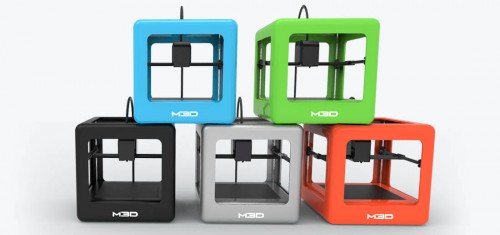
Welcome to the first part of Print and Play, a series I’ve been thinking and working on for quite some time now. Over the past few years I’ve noticed a trend. More and more publishers, designers, and gamers are using 3D printing to create, prototype, or supplement their gaming. There are dozens 3D printers on the market, and more arriving every day. A lot of them are falling into pretty affordable ranges for the average consumer. Hence the first printer in this series, the Micro 3D. My thought was to test every 3D printer I could get my hands on to see how they stack up, and how they could be used in tabletop gaming.
The Micro 3D was a huge success on Kickstarter with over 12,000 backers. The mission of the Micro was to be an attractive, affordable, quality 3D printer for the average consumer. Coming in at only $350, the printer has the following tech specs (take from the Micro 3D site):
“Supports many different materials: ABS, PLA, nylon, professional, chameleon
50-350 micron layer resolution
15 micron X and Y positioning accuracy
Filament: standard 1.75mm. 1/2lb rolls fit within print bed and allow you to try a variety of materials and colors for less! Standard filament rolls also supported.
Print height: 116mm (4.6″)
Base Print Area: 109mm x 113mm
Print Area Above 74mm: 91mm x 84mm
Removable Print Bed Size: 128x128mm
Printer Dimensions: It’s a cube, 7.3 in (185 mm) per side.
Printer weight: 1kg (2.2 lbs)
Package weight: 2kg – 2.7kg (4.4 lbs – 6 lbs)
USB Compatible”
I’ve had a few months to play with the Micro, and it’s impressed me beyond measure. After unboxing the machine I plugged it in, installed the software, and after a quick auto-calibration I was off and printing. No complicated setup. No fiddling with temperature settings, etc. There was already a spool of PLA filament loaded internally into the machine, so it was pretty much plug and play. You may notice the blue painter’s tape on the print bed in the photo above, but the Micro actually comes with a square of Buldtak in place. This actually works way better than painters tape, but I accidentally tore mine while removing a print. I’ll be getting more in the future, but blue painter’s tape works fine in the meantime.
So what did I print? My first few prints were simple Chess pawns. I printed one on the lowest quality setting, one on the highest, and one with a high quality setting, but a low fill setting. Here’s the results.
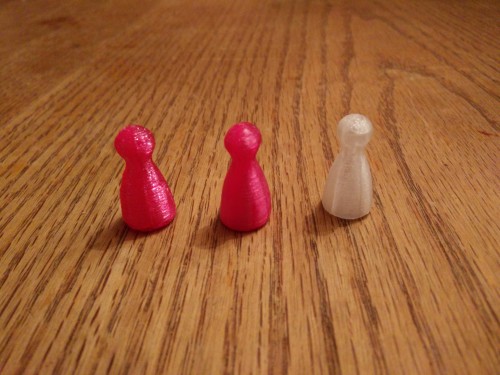 The high quality prints are really nice, and even the low quality looks pretty descent. I ended up doing some other jobs for more functional items in lower quality, while game pieces and such in high quality. After the pawns I tried printing out some stuff from the Open Board Game project, and a Deco Dieselbot miniature. After those, I printed the spaceships from Breach: Starship Duels.
The high quality prints are really nice, and even the low quality looks pretty descent. I ended up doing some other jobs for more functional items in lower quality, while game pieces and such in high quality. After the pawns I tried printing out some stuff from the Open Board Game project, and a Deco Dieselbot miniature. After those, I printed the spaceships from Breach: Starship Duels.
The Open Board Game pieces and the ships came out quite nice, but the Dieselbot’s details came out a bit choppy. It was actually one of the only items I’ve printed so far that I was a bit disappointed how it came out.
I got a bit ambitious after this, and got a project in mind I really wanted to try. My son’s 10th birthday was coming up at the time, and I though it would be really cool to print him out a Minecraft Chess Set. I only had clear and fuscia PLA filament, but I figured I could prime them when I was done printing. 127 hours later, I was done.
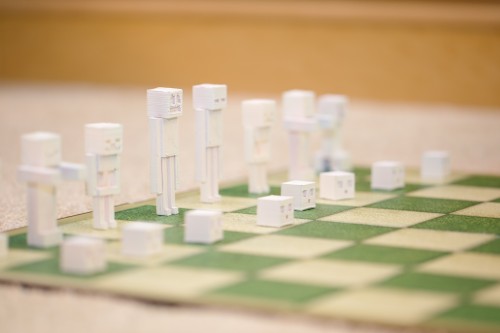 He loved it. I loved it. The plastic primed beautifully, and the prints came out amazing. It took a bit to clean some of the smaller area’s supports off, but that’s nothing a bit of patience couldn’t handle. Of course this brings me to the one real downfall of the Micro 3D. It’s slow. A lot of prints I’ve tested on other machines took twice to four times as long to print. I can’t complain too much, though, because of the ease and consistency of the printer. It really is as easy as a quick setup and you’re on your way. Out of 4 spools of filament’s worth printing, I’ve had maybe 2-3 prints fail.
He loved it. I loved it. The plastic primed beautifully, and the prints came out amazing. It took a bit to clean some of the smaller area’s supports off, but that’s nothing a bit of patience couldn’t handle. Of course this brings me to the one real downfall of the Micro 3D. It’s slow. A lot of prints I’ve tested on other machines took twice to four times as long to print. I can’t complain too much, though, because of the ease and consistency of the printer. It really is as easy as a quick setup and you’re on your way. Out of 4 spools of filament’s worth printing, I’ve had maybe 2-3 prints fail.
Last, but certainly not least, I started thinking of printing some adaptive game accessories. My wife and I run a social communications game group, and I was trying to think of ways I could improve some of the kids’ gaming experience. The first though that came to mind was something to help them hold hands of cards. A quick search and I found a great card holder. It was a bit large for the Micro, but I was easily able to scale it down with their software to produce something that has worked like a charm.
 Since then, I’ve also printed some larger meeples that are easier to hold, along with card and dice trays.
Since then, I’ve also printed some larger meeples that are easier to hold, along with card and dice trays.
The Micro has helped me learn a lot about 3D printing, and set a nice standard for me to compare other printers to. It’s ease of use, simple setup, and consistent printing more than make up for the slower print times. The price isn’t too shabby, either. It’s an amazing little workhorse, and I’ve actually done a lot of printing that isn’t gaming related, too. My next project is to help a local designer buddy of mine print some pieces out for his prototypes. It’s an exciting project, and I can’t wait to share the results.
Micro 3D – $350
Pros: Price, ease of use/setup, consistent
Cons: Speed
Overall Verdict: Excellent
A demo Micro 3D unit and 2 spools of filament were provided for this review.
Game Designer Wanted With Security Clearance
09 Oct
Posted by David Miller as Gamification, Modern Board Games, RPGs, War Games
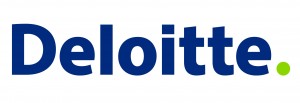 Deloitte is seeking to hire a game designer for government consulting work. The game designer will be part of a team at Deloitte that provides e-learning, simulations, and serious games.
Deloitte is seeking to hire a game designer for government consulting work. The game designer will be part of a team at Deloitte that provides e-learning, simulations, and serious games.
Applicants are expected to have professional experience in game design, should be prepared to have responsibility for both overall game concept and production details, and will be required to obtain a security clearance. The position is located in Arlington, Virginia.
- Comments Off on Game Designer Wanted With Security Clearance
BoardGameCons
16 Sep
Posted by Rob Kalajian as Card Games, CCGs, Classic Board Games, Electronic Games, Gamification, Miniatures, Modern Board Games, RPGs, War Games

BoardGameCons is a site were you can find the nearest board gaming conventions to you, and when they’re going to be. The site, while still gathering information, already has some cons in there, and you can always let them know of ones they don’t have listed.
Hopefully the site catches on. It’d be great to have an easy-to-navigate place to see what’s going on in my area, as I just missed an awesome event in Boston recently.
It’s a simple idea, but an excellent one.
- Comments Off on BoardGameCons
 The German Federal Enterprise for International Cooperation (GIZ), a development agency of the German government, is sponsoring a gamification hackathon [PDF] next month in Addis Ababa, Ethiopia. Those with backgrounds in game design, coding, illustration, storytelling, or subject-matter expertise are all welcome, though applications are only being taken from citizens of African countries. For those accepted, GIZ will cover all travel expenses, accommodation, and meals.
The German Federal Enterprise for International Cooperation (GIZ), a development agency of the German government, is sponsoring a gamification hackathon [PDF] next month in Addis Ababa, Ethiopia. Those with backgrounds in game design, coding, illustration, storytelling, or subject-matter expertise are all welcome, though applications are only being taken from citizens of African countries. For those accepted, GIZ will cover all travel expenses, accommodation, and meals.
The topics that participants may address during the event may include pretty much anything—such as healthcare, agriculture, sustainable development, education, art, or emergency management.
[via Tech Cabal]
 Officers pursuing a discrimination lawsuit against the New York City Police Department allege that commanders at the 122nd precinct improperly gamified law enforcement. They claim points were awarded for various accomplishments—such as one point for a misdemeanor arrest and one-and-a-half points for a felony arrest—and a minimum number of points were required to earn vacation and overtime, avoid certain duties, or even qualify for promotion.
Officers pursuing a discrimination lawsuit against the New York City Police Department allege that commanders at the 122nd precinct improperly gamified law enforcement. They claim points were awarded for various accomplishments—such as one point for a misdemeanor arrest and one-and-a-half points for a felony arrest—and a minimum number of points were required to earn vacation and overtime, avoid certain duties, or even qualify for promotion.
[via New York Post]
TaleBlazer: AR Game Platform for Education
17 Jan
Posted by David Miller as Electronic Games, Gamification, RPGs
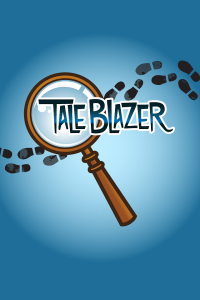 TaleBlazer is a software platform for the development of alternate reality games at museums, zoos, nature centers, living-history sites, and other educational institutions. Created by MIT’s Scheller Teacher Education Program, TaleBlazer allows such organizations to develop sophisticated location-based games using a simple browser-based scripting system.
TaleBlazer is a software platform for the development of alternate reality games at museums, zoos, nature centers, living-history sites, and other educational institutions. Created by MIT’s Scheller Teacher Education Program, TaleBlazer allows such organizations to develop sophisticated location-based games using a simple browser-based scripting system.
TaleBlazer games can run on either iOS or Android devices and allow visitors to interact with virtual characters and objects triggered by their real-world locations.
At the Columbus Zoo, for example, one game has players acting as journalists studying global climate change, while with another players take on the role of detectives investigating a crime involving illegal wildlife trade.
New York University Recruiting Game Faculty
17 Sep
Posted by David Miller as Card Games, CCGs, Electronic Games, Gamification, Modern Board Games, RPGs, War Games
![]() The NYU Game Center is looking to fill two full-time faculty positions for the 2015-2016 academic year. While teaching experience is a plus, the more important requirement is ongoing professional participation or research in the field of games.
The NYU Game Center is looking to fill two full-time faculty positions for the 2015-2016 academic year. While teaching experience is a plus, the more important requirement is ongoing professional participation or research in the field of games.
Whether you are an industry veteran with triple-A experience who wants a chance to share your knowledge of the complex craft of game development, an independent developer exploring the experimental edge of game aesthetics, or a critical theorist asking questions about the fundamental nature and cultural context of games and play, we want to talk to you about joining the NYU Game Center.
- Comments Off on New York University Recruiting Game Faculty
 New from IT research firm, Gartner, is Gamify, a primer on gamification from the business perspective. Part one of the book focuses on the value of gamification, part two on designing a gamified experience, and both on how to connect with players on an emotional level.
New from IT research firm, Gartner, is Gamify, a primer on gamification from the business perspective. Part one of the book focuses on the value of gamification, part two on designing a gamified experience, and both on how to connect with players on an emotional level.
Author Brian Burke distinguishes between gamification and traditional loyalty programs… The key, he argues, is to design a gamified solution that will encourage “players” to achieve their own goals. In other words, the sweet spot for gamification objectives is the space where the business objectives and player objectives are aligned.
Game Bandit
22 Apr
Posted by David Miller as Card Games, CCGs, Classic Board Games, Gamification, Modern Board Games, RPGs, War Games
 Enter for a chance to win one of Shape magazine’s gift bags given to celebrities on Hollywood Game Night. The bag includes Bananagrams and Pictionary Frame Game.
Enter for a chance to win one of Shape magazine’s gift bags given to celebrities on Hollywood Game Night. The bag includes Bananagrams and Pictionary Frame Game.
Children’s charities can get Play Connects grants of up to $10,000 from the Toy Industry Foundation.
Lock ‘n Load Publishing is running a Tax Break Sale.
Funagain Games is running a Spring Cleaning Sale.
- Comments Off on Game Bandit
Game Bandit
01 Apr
Posted by David Miller as Card Games, CCGs, Classic Board Games, Electronic Games, Gamification, Modern Board Games, Other, RPGs, War Games
 Happenate is giving away board game packages to three people who use the service to start a board game get-together—Pandemic, Sentinels of the Multiverse, and Mice and Mystics.
Happenate is giving away board game packages to three people who use the service to start a board game get-together—Pandemic, Sentinels of the Multiverse, and Mice and Mystics.
For 20% off purchases at Toys “R” Us online use coupon code “FRIEND20“. For discounts in-store, print this coupon.
Troll In The Corner is giving away three copies of Village Idiot.
Nordic Larp, the book that received the 2012 Diana Jones Award for Excellence in Gaming, is now available in digital form for free.
Atlas Games is giving away 20 copies of the TableTop Gloom Expansion to people who can’t attend International TableTop Day events.
The Army Painter is giving away one of everything, it’s whole line of miniature painting tools.
Enter for a chance to win tickets to GSummit San Francisco (gamification).
- Comments Off on Game Bandit
Trending
- Are Board Games Dangerous?
- Pass It, the Dental Hygienist Study Game
- The Truth About Dominoes On Sunday in Alabama
- Home
- Terrain for Heroscape
- Pokémon TCG: XY Steam Siege Launches August 3rd
- What Happened to the Jewel Royale Chess Set?
- Top 20 Board and Card Game News Items for 2010
- Numenko, YA "Scrabble With Numbers" Game
- Miniaturized King of Tokyo
Archives
Most Popular Articles
- The 20 Most Valuable Vintage Board Games
- Sequence Game, and Variants
- USPS Adds Board Game Flat Rate Box
- Baila, the Estonian Drinking Card Game
- The 13 Most Popular Dice Games
- The Truth About Dominoes On Sunday in Alabama
- Are Board Games Dangerous?
- Oh the Irony—Illuminati Card Game Continues to Inspire Conspiracy Theorists
- The Convoluted Story of Iron Wind Metals, Ral Partha, and Battletech Miniatures
- What Happened to the Jewel Royale Chess Set?
Recent Posts
- Toy Fair 2019—Breaking Games
- Talisman Kingdom Hearts Edition
- Toy Fair 2019—Winning Moves
- Toy Fair 2019—Games Workshop
- Toy Fair 2019—Star Wars Lightsaber Academy
- Toy Fair 2019—Stranger Things Games
- Toy Fair 2019—HABA
- Licensing Roundup
- Game Bandit
- 2018 A Difficult Year For Hasbro But Not For D&D Or MtG
Recent Comments
- on Toy Fair 2019—Winning Moves
- on Game Bandit
- on Second Look—Dungeons & Dragons Waterdeep Dragon Heist
- on Crowdfunding Highlights
- on Beyblade SlingShock
- on Game Bandit
- on Game Bandit
- on Watch This Game!, the Board Game Review Board Game
- on Second Look—Vampire: The Masquerade 5th Edition
- on Palladium Books Loses Robotech IP License, Cancels Five-Year-Overdue Robotech RPG Tactics Kickstarter








